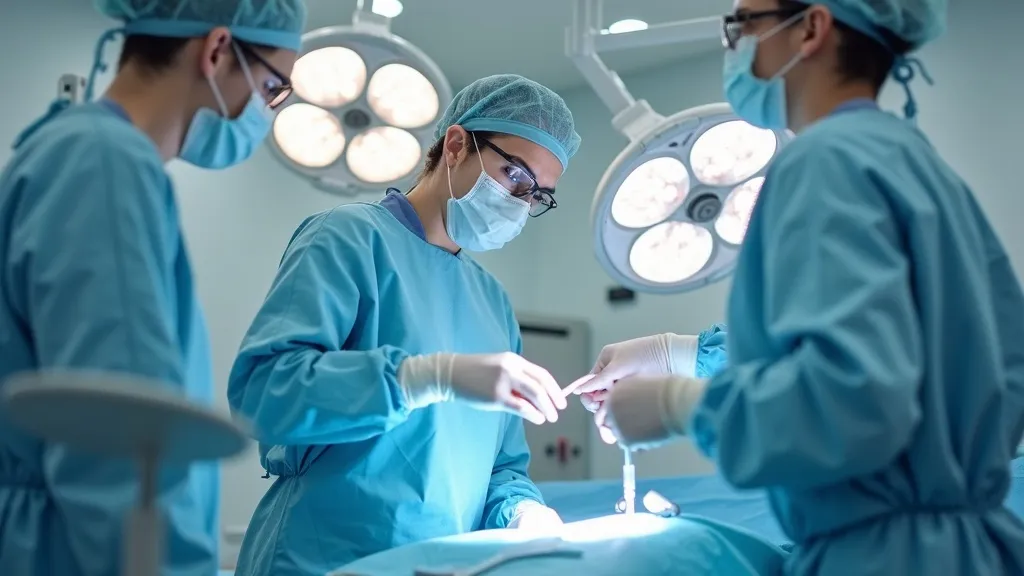Understanding Abdominoplasty and Liposuction
Abdominoplasty and liposuction are two popular cosmetic procedures aimed at improving body contour and appearance. While both surgeries involve the removal of excess fat, they differ significantly in technique and purpose. Abdominoplasty, also known as a tummy tuck, primarily targets skin and muscle restoration, whereas liposuction focuses on fat removal from specific areas of the body.

Introduction to Body Contouring Procedures
In the realm of cosmetic surgery, abdominoplasty and liposuction are renowned for their transformative effects on body contour and self-esteem. These procedures have garnered attention for their ability to address stubborn fat and skin issues that are often resistant to diet and exercise. Body contouring has evolved significantly over the years, with advancements in surgical techniques and technologies making these procedures more effective and accessible. This article explores the intricacies of abdominoplasty and liposuction, comparing their techniques, benefits, recovery processes, and long-term results.
Abdominoplasty: The Tummy Tuck
Abdominoplasty, commonly referred to as a tummy tuck, is a surgical procedure designed to remove excess skin and fat from the abdomen while tightening the abdominal muscles. This procedure is particularly beneficial for individuals who have experienced significant weight loss or pregnancy, resulting in loose and sagging skin. Beyond cosmetic enhancement, abdominoplasty can also provide functional benefits, such as improved posture and reduced back pain.
During an abdominoplasty, a surgeon makes an incision across the lower abdomen, from hip to hip. The skin is then lifted, allowing for the repair and tightening of the underlying abdominal muscles. Excess skin is removed, and the remaining skin is repositioned for a smoother, firmer appearance. Surgeons may also perform liposuction during the procedure to enhance the contour further, particularly in the flanks or upper abdomen.
There are different types of abdominoplasty procedures, including complete abdominoplasty, mini-abdominoplasty, and circumferential abdominoplasty. The choice of technique depends on the individual’s body type, the degree of excess skin and fat, and their desired outcomes.
Types of Abdominoplasty
Complete Abdominoplasty: This is the traditional tummy tuck, which involves a larger incision and is suitable for patients with significant skin and muscle laxity. It provides the most dramatic results and includes the repositioning of the belly button.
Mini-Abdominoplasty: This is a less invasive option that focuses on the lower abdomen. It involves a shorter incision and is ideal for patients with minimal excess skin. The belly button is usually not repositioned in this procedure.
Circumferential Abdominoplasty: This approach is often used for patients who have undergone massive weight loss. It removes excess skin from the abdomen, back, and sides, resulting in a more comprehensive contouring effect.
Liposuction: Targeted Fat Removal
Liposuction, on the other hand, is a less invasive procedure focused on removing localized fat deposits from various parts of the body, such as the abdomen, thighs, hips, and arms. Unlike abdominoplasty, liposuction does not address excess skin or muscle laxity. This procedure is often sought after for body sculpting, enabling individuals to achieve a more balanced and harmonious physique.
The procedure involves the insertion of a thin tube, called a cannula, through small incisions. This cannula is used to suction out unwanted fat, resulting in improved body contour and a more proportionate appearance. Liposuction can target specific areas that are often resistant to diet and exercise, such as the "love handles" or "muffin top." The results can be quite dramatic, giving patients a newfound sense of confidence.
Techniques in Liposuction
There are various techniques employed in liposuction, each offering unique benefits and suitability for different patients:
Tumescent Liposuction: This is the most common technique, where a saline solution mixed with anesthetic and epinephrine is injected into the fatty tissue. This solution helps to minimize bleeding and pain during the procedure, allowing for a smoother recovery.
Ultrasound-Assisted Liposuction (UAL): This technique uses ultrasound waves to liquefy fat before it is suctioned out, making it particularly effective for stubborn fat deposits and areas with fibrous tissue, such as the back.
Laser-Assisted Liposuction (LAL): Similar to UAL, this method employs laser energy to melt fat and tighten skin. It often results in less bruising and swelling compared to traditional liposuction.
Power-Assisted Liposuction (PAL): This technique uses a specialized vibrating cannula that helps break up fat cells, making the removal process quicker and easier, which can lead to a shorter recovery time.
Comparing Abdominoplasty and Liposuction
While both abdominoplasty and liposuction aim to enhance body aesthetics, they serve different roles and are often combined for comprehensive body contouring. Here's a closer look at their differences:
| Procedure | Purpose | Ideal Candidates |
|---|---|---|
| Abdominoplasty | Removes excess skin and tightens muscles | Post-pregnancy, significant weight loss |
| Liposuction | Removes localized fat deposits | Close to ideal weight, specific fat areas |
Choosing the Right Procedure
When considering a body contouring procedure, it's crucial to consult with a board-certified plastic surgeon to determine the very appropriate option based on individual needs and goals. The choice between abdominoplasty and liposuction depends on factors such as the amount of excess skin, muscle laxity, and the specific areas of concern.
During the consultation, the surgeon will evaluate the patient’s medical history, current health status, and aesthetic goals. They may also suggest a combination of both procedures for optimal results. It's essential for patients to have realistic expectations and understand that both procedures require a commitment to maintaining a healthy lifestyle post-surgery to ensure long-lasting results.
Recovery Process
Understanding the recovery process is vital for anyone considering body contouring procedures. Each procedure has its own healing timeline, and being prepared can significantly enhance the overall experience.
Recovery After Abdominoplasty
Recovery after abdominoplasty typically requires a longer period due to the nature of the surgery. Patients can expect:
- Immediate Post-Operative Phase: After surgery, patients will be moved to a recovery room for monitoring. Pain management is a priority, and patients may be prescribed medication to manage discomfort.
- First Week: Patients are usually advised to take it easy, avoiding strenuous activities. Swelling and bruising are common, and drains may be placed to help remove excess fluid.
- Weeks 2-4: Patients can gradually resume light activities. However, heavy lifting and intense workouts should be avoided. Follow-up appointments are crucial during this period to monitor healing.
- Full Recovery: Complete recovery can take up to six weeks. Most patients return to work after about four weeks, but this varies based on individual healing.
Recovery After Liposuction
Liposuction recovery is generally shorter, but it still requires careful attention:
- Immediate Post-Operative Phase: Similar to abdominoplasty, patients will be monitored in a recovery area. Pain management is also essential, but discomfort is usually less intense.
- First Week: Patients may experience swelling and bruising, but they are often encouraged to walk around gently to promote circulation.
- Weeks 1-2: Many patients return to light activities and work within a week, depending on the extent of the liposuction performed. Wearing compression garments is typically required to help reduce swelling.
- Full Recovery: Full results can take several months to become apparent as swelling subsides. Patients should avoid vigorous exercise for at least two weeks.
FAQs
Q: Can abdominoplasty and liposuction be combined?
A: Yes, many patients opt for a combination of both procedures to achieve optimal results, particularly if they have both excess skin and localized fat deposits.
Q: How long is the recovery period for these procedures?
A: Recovery times vary. Abdominoplasty typically requires a longer recovery period of about 4-6 weeks, while liposuction recovery is usually shorter, around 1-2 weeks.
Q: Are the results good?
A: While both procedures offer long-lasting results, maintaining a stable weight and a healthy lifestyle is essential for preserving the outcomes.
Q: Are there any risks involved?
A: As with any surgical procedure, there are risks involved, including infection, scarring, and anesthesia complications. It's crucial to discuss these with your surgeon during the consultation.
Q: How long do the results last?
A: The results of both procedures can last for many years, but factors such as weight fluctuations, aging, and lifestyle choices can impact longevity. Patients are encouraged to maintain a healthy diet and exercise regimen to sustain their results.
Q: Will there be visible scars after surgery?
A: Scarring is an inherent part of surgical procedures. Abdominoplasty typically results in a horizontal scar along the lower abdomen, while liposuction incisions are small and often less noticeable. Surgeons employ techniques to minimize scarring, and over time, scars may fade significantly.
Conclusion
Abdominoplasty and liposuction offer promising solutions for those seeking to enhance their body contours and boost their confidence. Understanding the distinct purposes and potential benefits of each procedure is key to making an informed decision. Consulting with a qualified surgeon will ensure that you choose the top approach to meet your aesthetic goals. It is essential to weigh the pros and cons of each procedure, consider your personal circumstances, and maintain realistic expectations about the outcomes.
Moreover, the journey to body contouring is not just about the physical changes but also about emotional and psychological factors. Many patients report a significant boost in self-esteem and overall quality of life following these procedures. Engaging in a supportive community, whether through online forums or local support groups, can also provide valuable insights and encouragement throughout the recovery process.
Ultimately, body contouring procedures like abdominoplasty and liposuction have the potential to be life-changing, providing individuals with the opportunity to reclaim their bodies and feel more confident in their appearance. With the right information, preparation, and support, patients can embark on this transformative journey with the assurance that they are making informed choices for their health and wellbeing.
Additional Considerations for Body Contouring
When embarking on your journey towards body contouring, there are several additional considerations to keep in mind to ensure a successful experience and outcome:
Realistic Expectations
One of the most critical aspects of considering body contouring procedures is setting realistic expectations. While both abdominoplasty and liposuction can yield remarkable results, they are not magic solutions that will resolve all body image concerns. Patients should approach these procedures with a mindset focused on enhancement rather than perfection. Understanding that individual results can vary based on anatomy, skin elasticity, and adherence to post-operative care will help set a positive outlook post-surgery.
Importance of a Healthy Lifestyle
Maintaining a healthy lifestyle is paramount to achieving and sustaining the desired results from body contouring procedures. Patients are encouraged to adopt a balanced diet rich in nutrients and engage in regular physical activity. This lifestyle commitment not only helps in recovery but also plays a crucial role in preventing weight gain after surgery. It is essential to view body contouring as a supplement to a healthy lifestyle rather than a replacement for it.
Emotional and Psychological Impact
Body contouring can have significant emotional and psychological effects. Many patients report feelings of renewed self-confidence and improved self-image following their surgeries. However, it is essential to be aware that some individuals may experience a range of emotions post-surgery, including anxiety or feelings of vulnerability. Seeking support from mental health professionals, friends, or support groups can be beneficial in navigating these feelings.
Financial Considerations
Body contouring procedures can represent a significant financial investment. It is important for patients to consider the costs associated with surgery, including the surgeon's fees, anesthesia, facility costs, and potential follow-up appointments. Many plastic surgeons offer financing options or payment plans, which can make these procedures more accessible. Additionally, patients should check with their insurance companies to determine if any costs may be covered, although cosmetic procedures are often not eligible for insurance reimbursement.
Choosing the Right Surgeon
Selecting a qualified, board-certified plastic surgeon is crucial for achieving the best possible results. Patients should conduct thorough research, including reviewing before-and-after photos of previous patients, reading reviews, and scheduling consultations with multiple surgeons. During these consultations, patients should feel comfortable discussing their goals and concerns and should ensure that the surgeon takes the time to address their questions comprehensively.
Post-Operative Care
Proper post-operative care is vital for a successful recovery and optimal results. Patients should follow their surgeon's post-operative instructions closely, which may include guidelines on activity restrictions, wound care, and signs of potential complications. Additionally, attending follow-up appointments is essential to monitor progress and address any concerns that may arise during recovery.
The Future of Body Contouring
The field of body contouring continues to evolve, with ongoing advancements in technology and techniques. Innovations such as non-invasive body contouring options, including cryolipolysis (fat freezing) and radiofrequency treatments, are gaining popularity for those seeking alternatives to traditional surgical procedures. These options may offer patients the chance to achieve desired results with less downtime and fewer risks.
As the demand for body contouring procedures grows, so too will the research and development of new techniques and technologies. Future trends may include enhanced minimally invasive procedures, improved recovery protocols, and personalized treatment plans based on genetic and lifestyle factors. As a result, patients can look forward to even more effective and tailored solutions for their body contouring needs.
In conclusion, abdominoplasty and liposuction are powerful tools in the pursuit of body contouring and self-improvement. By understanding the procedures, recovery processes, and the importance of a healthy lifestyle, patients can make informed decisions that align with their aesthetic goals. With careful planning, support, and commitment to their journey, individuals can achieve transformative results that enhance their confidence and quality of life.






